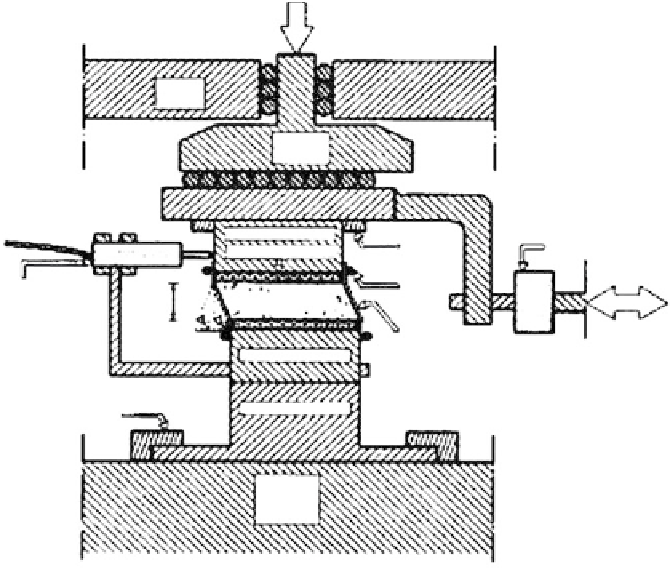Environmental Engineering Reference
In-Depth Information
Vertical
consolidation
load
Fixed
plate
To p
plate
Cyclic force
F
c
applied via
load cell
on top cap
Load
cell
Clamp
Rubber
curing
Horizontal
displacement
transducer
H
Specimen
Wine-Reinforced
rubber
membrane
Bottom cap
Pedestal
Clamp
Fixed
bottom
plate
d
e = horizontal cyclic displacement amplitude
F
e = horizontal cyclic shear force
H
= height of specimen
A
= area of specimen
o
= d
o
/ H = horizontal cyclic shear strain amplitude
τ
o
= F
o
/ A = horizontal cyclic shear stress amplitude
FIGURE 3.34
NGI-type simple shear device at the UCLA Soil Dynamics Laboratory. (From Vucetic, 2004.)
In clay soils,
K
0
has been found to be directly related to the amount of prestress or pre-
consolidation in the formation, ranging from 0.5 to almost 3. The degree of prestress is
given in terms of the overconsolidation ratio (OCR), i.e., the ratio of the maximum past
pressure to the existing overburden pressure (see
Section 3.5.4)
.
Passive State of Stress (K
p
)
The passive state exists when a force pushes against a soil mass and the mass exerts its
maximum resistance to the force. The principal stresses for the passive state are shown in
Figure 3.35a;
as the soil element is pushed, the vertical stress remains unchanged but the
horizontal stress increases (
σ
h
σ
v
). As movement continues the shear stress increases
from the at-rest condition (1) until
σ
h
σ
v
(2), then continues to increase as slip lines (rup-
ture planes) form and finally failure occurs at (4). At this point of plastic equilibrium, the
passive state has been reached.
The relationship between
and the principal stresses at failure, as shown on the Mohr
diagram of Figure 3.35a, may be expressed for a cohesionless granular soil with a hori-
zontal ground surface as
φ
σ
1
/
σ
3
σ
v/
σ
h
(1
sin
φ
)/(1
sin
φ
)
(3.36)



